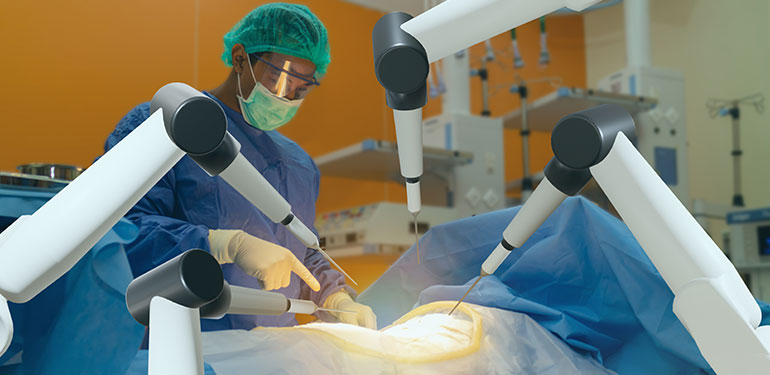
Medical Robotics Market to Experience Explosive Growth, Revolutionizing Healthcare with Advanced Solutions
Share

The global medical robotics market, is forecasted to grow exponentially, reaching USD 45 billion by 2030. According to research by Next Move Strategy Consulting, the market is projected to expand at a robust compound annual growth rate CAGR of 17% by 2030.
Driving Forces Behind Market Growth
The surging demand for medical robotics is primarily fueled by the growing preference for Minimally Invasive Procedures (MIS). Patients and healthcare providers are increasingly opting for alternatives to traditional open surgeries, with medical robots playing a pivotal role in facilitating these advanced procedures. The capability of medical robots to perform with enhanced precision and dexterity through smaller incisions significantly contributes to their adoption. This, in turn, drives the widespread integration of medical robotics into surgical practices worldwide.
Transformative Role in Rehabilitation
Medical robots are also proving indispensable in addressing complex rehabilitation needs. Devices like robotic exoskeletons are transforming the landscape of healthcare by offering innovative solutions for conditions such as spinal cord injuries, multiple sclerosis, and stroke recovery. For example, Ekso Bionics Holdings, Inc. has developed the EksoNR, a next-generation robotic exoskeleton designed to aid patients in relearning to walk with a more natural gait. Such cutting-edge technologies are instrumental in improving patient outcomes and enhancing the overall quality of care.
Challenges and Opportunities
Despite the promising growth prospects, the medical robotics market faces significant challenges, particularly the high initial cost of acquiring and implementing these advanced systems. This financial barrier can deter adoption, especially for smaller healthcare facilities.
Start with a FREE Sample – Download Now!
Conversely, the integration of Artificial Intelligence (AI) into medical robotics represents a game-changing opportunity. AI-powered robotic systems are designed to automate routine tasks, optimize surgical precision, and provide real-time data insights, enabling healthcare professionals to focus on more complex aspects of patient care. This convergence of AI and robotics is poised to streamline healthcare processes and unlock new levels of efficiency and innovation.
Conclusion
The medical robotics market’s rapid expansion underscores its transformative potential in revolutionizing healthcare practices. From facilitating minimally invasive procedures to advancing rehabilitation processes, medical robots are at the forefront of delivering innovative solutions that enhance patient care.